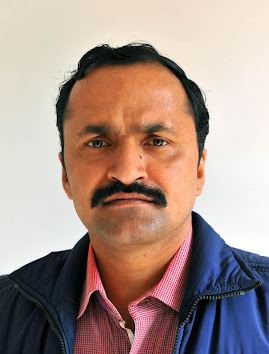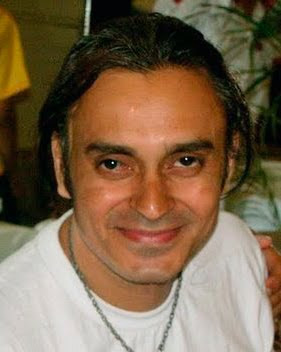Article in "Dear Cinema"
http://dearcinema.com/article/miff-%E2%80%9910-diary-conversation-director-children-pyre
"Children of the Pyre" has been one of the most successful Indian documentaries made recently. It has won awards for Best Documentary at various festivals including Montreal, Indian Film Festival of Los Angeles, USA and Sao Paulo besides winning a special jury award at the national film awards of India. The film has been in the competition at Pusan, Leipzig, Munich, Warsaw and Mumbai (MIFF).
The humble Rajesh Jala talks to Ameya Bahulekar and Pratik Singla in Mumbai, where his film is competition for the Golden Conch.
How did you start with ‘Children of the Pyre’ as a project?
I had this fascination for Banaras for ages and I wanted to make a film on Banaras but I didn’t know what. Three years back I visited the place to explore and find a subject. I stayed there for a month and one day I went to this cremation ground and I observed these kids. It was quite a revelation for me. I started following these kids and I thought this is the story I should do.
Since the location was religious and sensitive, what kind of difficulties did you face?
It was very difficult to shoot the film. There was a ‘three tier’ security there (barriers which I had to cross). The official permission was the first obstruction which was not easy to get. The second was the cremators’ community who were not comfortable with the idea of somebody shooting there for months at a stretch. A day of two may be tolerable but not more than that. So I tried to convince them of my intentions. I also got some kind of local support which highlighted the fact that I was really involved with the kids. After a while they did not bother me. The third hurdle was a group of local people (touts) who make their income by minting money from foreigners. There are hundreds of foreigners coming to this cremation ground everyday and they sit for hours there. There touts willingly or unwillingly give out information to them in exchange for money. So I was a big threat to them (with my camera), since what they were doing was illegal. So initially I was intimidated by them subtly and indirectly, but somehow over time we managed to handle them. But the most difficult part was actually being there at the cremation ground, mentally and physically because it is not very easy to be.
How did the relatives of the deceased react to the concept of shooting at that place?
I was asked many times by them to ‘shut up’ and ‘stop it’ and things like that. Then I would just pack my camera and leave because I couldn’t say anything to them. But many months later there were encouraging occasions when a relative protested and a cremator told him- “If you want to cremate the body, he has to shoot it. He is a part of our community and he has been here for months.” It occurred a couple of times.
How did you plan/organize out the shooting?
Around 80-90% of the film is candid. I never planned anything. Only the early morning montages were composed and planned. We would shoot for nights at a stretch and then sleep for days. There is not a single moment of time when I had not spent at the place. During the summer schedule, my intention was to shoot the kids at the peak of temperatures because I wanted to see how they would handle the heat. The temperature had crossed 50 degrees. The crew and I were dehydrated, sick and were literally limping in the last days of the shoot.
What made you continue at such a location?
These kids were so inspirational. All credit to them. Their resilience, struggle, and their strength, gave me strength. They manage their lives without moaning about it. They happily spend their days earning money without care. They just have fun. It’s a very difficult irony which was so inspirational.
How was it working with the kids? What kind of rapport did you have with them?
It was not easy to build a rapport with them with this nature. They reached a level where they asked questions which were not so comfortable. They questioned my existence. Initially they would treat me like a tourist or as a stranger. But gradually when they could see that I was not leaving their presence, just like their shadow, very gradually they became serious. Later on they would be camera conscious. But when you stay there for weeks and months, you become a part of the crowd. I became an integral part of the cremation ground while I was shooting.
Where are the kids now? How are they doing?
It is interesting. I was very keen on doing something for them. Last year I approached an NGO which works for children. They said that it was a very small project and hence they cannot do it. So then I came up with an idea of a bigger project with more houses and more kids which they liked. Eventually on the 4th of September we launched a project which aims to transform the lives of children over a period of five years. For the first six months, ten children were sent to English vocational centre. Every day they learn English for an hour in Banaras. In the afternoon, there is a teacher who comes to their mohalla and teaches almost twenty kids for three hours. This is an initial plan. For six months they would mostly collect data and understand their needs and requirements, to understand how, where and what to do. The organization does not believe in giving money directly, but believes in community transformation. They have also started organizing theatre workshops for the kids. There is also an American gentleman, who loves Banaras and visits occasionally, who has offered a stipend to these seven kids. Four out of seven kids, who are receptive to studies, are going to be sent to pre boarding school. After which we will try to prepare them for boarding school. This is the plan. The journey has begun.
What about the mental state of the kids?
These kids will never be ‘normal’ kids. I have recommended these kids for counseling. They have to be sensitized. So a psychiatrist will probably council these kids and try to bring them back to a normal state of mind.
What do you think about the documentary scene in India? Where do you see it going?
There is talent in India, but no budget. There is always the problem of money. The scene is not very good. So, if there is any kind of support from the state or an organization without questioning their vision and without compromising their intentions that they have set out, it could be better. The audience is there but then again no platform. These obstructions stop the filmmakers to flourish.
Visually, Children of the Pyre is a difficult film to watch.
Followers
Director and Cinematographer

Rajesh S. Jala
Editor

Sheetal Koul
Additional Camera

Giriraj Sharma
1st Asst. Director

Krishna Sharma
Copyright 2010 Children of The Pyre
Design: Webdesign
Design: Webdesign
0 comments to MIFF 2010 Interview "Rajesh Jala"
Post a Comment